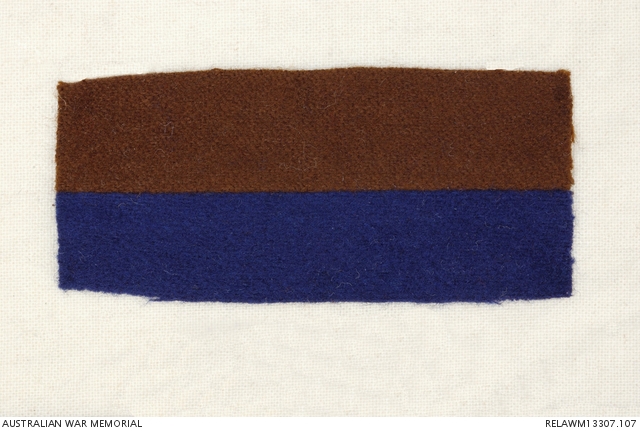| Places | |
|---|---|
| Events | |
| Battle Honours | |
| Commanding Officers | |
| Decorations | 1 VC; 1 CB; 2 CMG; 8 DSO, 1 bar; 2 MBE; 24 MC, 1 bar; 29 DCM; 167 MM, 18 bars; 8 MSM; 50 MID; 8 foreign awards |
| Conflict | First World War, 1914-1918 |
| References |
|
| Category | Unit |
| Conflict |
First World War, 1914-1918 |
| Unit hierarchy |
15th Australian Infantry Battalion


The 15th Battalion AIF was raised from late September 1914, six weeks after the outbreak of the First World War. Three-quarters of the battalion were recruited as volunteers from Queensland, and the rest from Tasmania. With the 13th, 14th and 16th Battalions it formed the 4th Brigade, commanded by Colonel John Monash.
The Queensland and Tasmanian recruits were united when the battalion trained together in Victoria. They embarked for overseas just before Christmas. After a brief stop in Albany, Western Australia, the battalion proceeded to Egypt, arriving in early February 1915. Australia already had an AIF division there, the 1st. When the 4th Brigade arrived in Egypt, it became part of the New Zealand and Australian Division. The 4th Brigade landed at ANZAC late in the afternoon of 25 April 1915.
From May to August, the battalion was heavily involved in establishing and defending the front line of the ANZAC beachhead. In August, the 4th Brigade attacked Hill 971. The hill was taken at great cost although Turkish reinforcements forced the Australians to withdraw. At the end of the month, a detachment from A Company reinforced the 14th Battalion's unsuccessful attack on Hill 60. The 15th Battalion served at ANZAC until the evacuation in December.
After the withdrawal from Gallipoli, the battalion returned to Egypt. While there, the AIF was expanded and was reorganised. The 15th Battalion was split and provided experienced soldiers for the 47th Battalion. The 4th Brigade was combined with the 12th and 13th Brigades to form the 4th Australian Division.
In June 1916 they sailed for France and the Western Front. From then until 1918, the battalion took part in bloody trench warfare. Its first major action in France was at Pozieres in August 1916. Along with most of the 4th Brigade, the battalion suffered heavy losses at Bullecourt in April 1917 when the brigade attacked strong German positions without the promised tank support. It spent much of the remainder of 1917 in Belgium, advancing to the Hindenburg Line.
In March and April 1918, the battalion helped stop the German spring offensive. In July 1918, as a result of his valorous actions during the fighting near Hamel, Private Henry Dalziel was awarded the battalion's only Victoria Cross. The battalion participated in the great allied offensive of 1918, fighting near Amiens on 8 August 1918. This advance by British and empire troops was the greatest success in a single day on the Western Front, one that German General Erich Ludendorff described as "..the black day of the German Army in this war...".
The battalion continued operations until late September 1918. At 11 am on 11 November 1918, the guns fell silent. In November 1918, members of the AIF began to return to Australia for demobilisation and discharge.